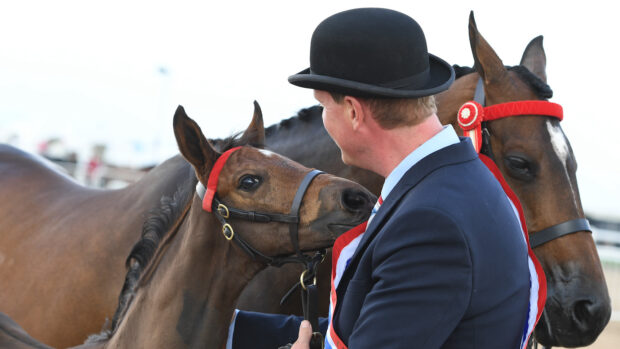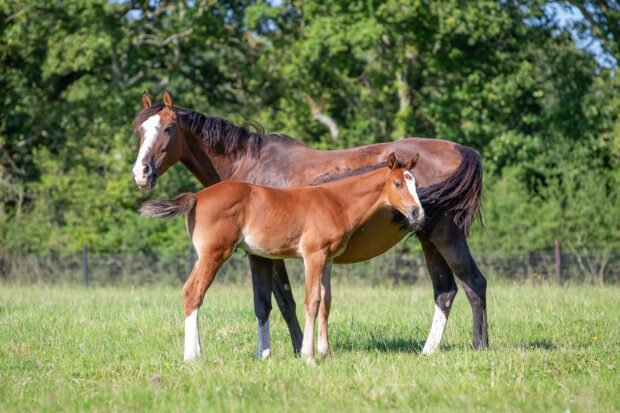More articles on breeding horses
View broodmares for sale
A pregnant mare can lose her foal for a variety of reasons, but twin pregnancy is one of the most common causes. Mares carrying twins commonly abort around six weeks making it vital that vets find out how many foals a mare is carrying as early as possible.
As twin foals rarely survive, it is important to reduce the chance of their development. While ultrasound scanning has massively improved our ability to detect twins, the procedure is not infallible.
The vast majority of twin pregnancies result from multiple ovulations (several eggs being expelled from the ovary) which is seen mostly in thoroughbreds and, in particular, in the maiden mare or mares more than 15 years old.
If a twin pregnancy is diagnosed before day 17, it is reasonably easy to abort one of the twins. However, it is extremely difficult to differentiate between a developing pregnancy and a uterine cyst, which are common in older mares, on a scan screen.
A cyst can appear next to a developing embryo, giving the impression of twins. Scanning your mare’s uterus before breeding will enable the vet to record the size and position of any cysts. This will help avoid mistaken twin pregnancies.
Twins often develop in the same area of the uterus and occasionally, the embryos can be so close together that it is difficult to see them as two distinct entities. In this case they can remain undiagnosed by the even most experienced stud vet.
There are three ways of preventing a twin pregnancy from running its course:
- One twin will often die naturally without any intervention from the vet.
- The vet can try to destroy one embryo. A hormone called prostaglandin is released, which often results in the loss of the remaining embryo.
- The vet can abort both embryos by giving the mare a hormone injection, as long as it is before five weeks after service. After this time, the natural hormones of the mare take over, which not only makes it difficult to abort the mare, but also to get her back in-foal that season.
While scanning has improved our understanding of multiple pregnancies, it can never be 100% certain that twins are not present. Scanning reduces, but does not eliminate, the risk and mares who have twinned once have a tendency to twin again.
Looking for more articles on breeding horses?
View broodmares for sale near you



